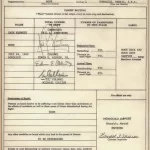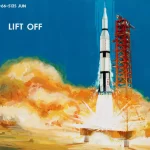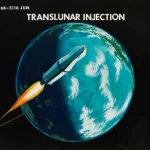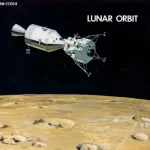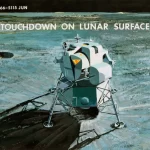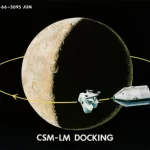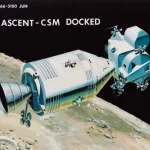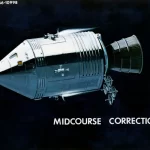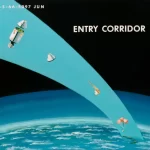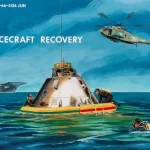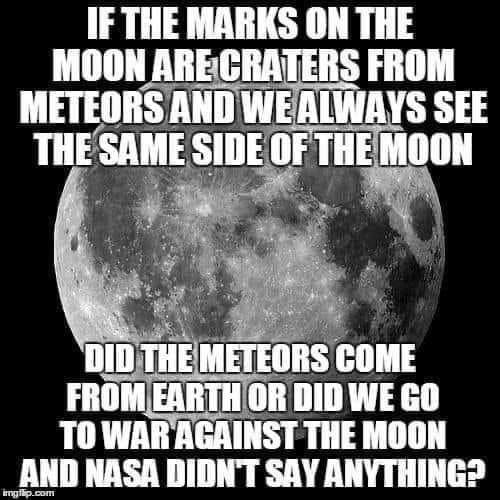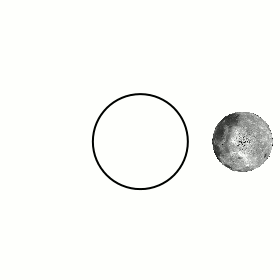The hilarious image of the Apollo 11 astronauts’ US Customs form, filled out upon their return to Earth through Pearl Harbor, Hawaii, has been going around the internet again; so I thought I might share one of my favorite little pieces of NASA spaceflight miscellanea: Buzz Aldrin’s travel expenses.
- The front of Aldrin’s reimbursement form (click to enlarge).
- Buzz Aldrin’s reimbursement receipt for his lunar flight (click to enlarge).
- The crew’s customs form (click to enlarge)
Upon returning to Earth from his history-making trip to the lunar surface, Buzz Aldrin filled out a travel expense voucher to get reimbursed for his “official travel.” It’s a delightfully mundane and hilarious thing, that nonetheless highlights some pretty interesting stuff about the jaw-dropping trip to the moon that he, Neil Armstrong, and Michael Collins undertook fifty-five years ago this summer.
His official itinerary is more detailed than the one provided on the customs form. Here it is in full, with some annotation. All dates are, naturally, in July of 1969:
7-7 | LV: Residence | 0445 | POV
(note: POV means “Privately Owned Vehicle.” Aldrin reported 8 miles for this leg of the journey and was reimbursed 56¢.)
7-7 | AR: EAFB | 0500
(note: EAFB is “Ellington Air Force Base” in Houston)
7-7 | LV: EAFB | 0530 | Gov. Air
7-7 | AR: Cape Kennedy, Fla. | 0800
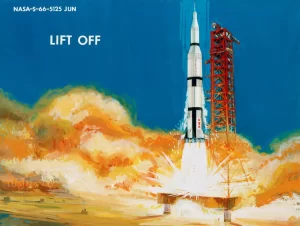
7-16 | LV: Cape Kennedy, Fla. | 0832 | Gov. Spacecraft
(note: Saturn V serial number SA-506, of course)
7-19 | AR: Moon | 1325
7-21 | LV: Moon | 2400 | Gov. Spacecraft
(note: transfer from NASA LM-5 Eagle to NASA CSM-107 Columbia not listed)
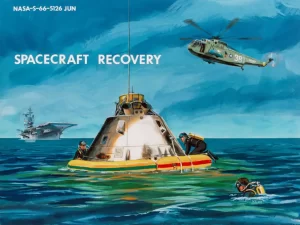
7-24 | AR: Pacific Ocean | 0600
(note: at 13°19′N 169°9′W in the North Pacific, about 920 miles or 1480 km from Honolulu)
7-24 | LV: Pacific Ocean | 0800 | USN Hornett
(note: Aldrin misspelled the name of the US navy aircraft carrier Hornet here.)
7-26 | AR: Hawaii | 0900
(note: Pearl Harbor, to be specific)
7-26 | LV: Hawaii | 1200 | USAF Plane
(note: the particular plane was a C-141B Starlifter designated 66-7958 USAF, which I cannot find a name for.)
7-27 | AR: EAFB | 0100
7-27 | LV: EAFB | 0215 | Gov. Veh.
(note: the Government Vehicle in question was the Mobile Quarantine Facility (MQF), a converted Airstream trailer. They would stay in the MQF for three weeks. Actually, they boarded the MQF on the Hornet; it was then loaded into 66-7958 in Hawaii and unloaded in Houston.)
7-27 | AR: LRL | 0300
(note: LRL is the Lunar Receiving Laboratory, building 37 at Johnson Space Center in Houston.)
A notation beneath this itinerary reads:
Government meals and quarters furnished for all the above dates.
Aldrin also reported 100 miles of “official vicinity travel” at Cape Kennedy for the nine days between his arrival and departure, for which he was reimbursed $10. Another note reads
POV authorized for official vicinity travel at Cape Kennedy, Fla. in leiu [sic] of rental car.
I can’t find any information about what POV this is; he left his personal vehicle in Houston when he flew on a government plane to Florida, so perhaps he owned two cars?
There are three handwritten notes beneath that which I cannot read but claim $8.00 and $19.25, as well as $4.50 of charges that he subtracts from the total; these three are listed in the “subsistence” column. The grand total claimed on this voucher are $33.31 ($279.17 in 2024 dollars), and it was approved by someone named “C.W. Bird.”
I find it so fantastic that a man who went to the moon still had to deal with paperwork once he returned. What a gem was 1960s NASA. A delightful interaction between the sublime moon and the mundane Earth.
Paintings in this post are from a set of NASA images produced before the launch and originally shared in a PopSci article. Here’s some more (click each to enlarge):





